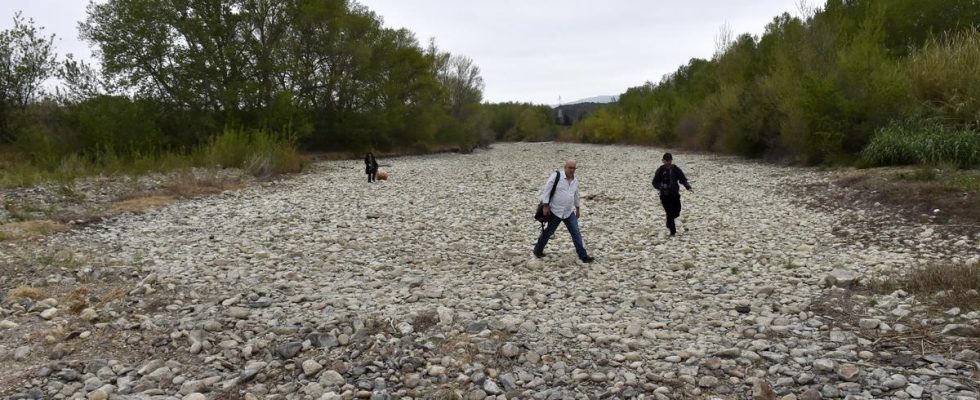Dried up river in Espira de l’Agly, in the south of France, on May 6, 2023. RAYMOND ROIG / AFP
The Old Continent warmed up by 2.3 degrees in 2022 compared to the pre-industrial era compared to 1.2 degrees for the whole planet.
The climate in Europe has warmed by 2.3 degrees in 2022 compared to the pre-industrial era (1850-1900), with a rate twice as fast as the global average since the 1980s, announced Monday the UN and the European Copernicus programme.
While the entire planet has warmed by almost 1.2 degrees due to greenhouse gas emissions, “Europe is the fastest warming region in the world“, recalled Professor Petteri Taalas, Secretary General of the World Meteorological Organization (WMO) of the United Nations, quoted in the foreword of the report.
The 2022 drought is ‘not a unique case’
In November, the WMO announced that Europe had warmed at a rate of +0.5 degrees per decade since the 1980s, twice as fast as the average of the other five global weather regions.
In most of Europe,high temperatures have exacerbated intense and widespread droughts, fueled violent wildfires, responsible for the second largest burned area ever measured on the continent, and caused excess deaths by the thousands due to heat waves“said Petteri Taalas.
According to the Emergency Situations Database (EM-DAT), meteorological, hydrological and climatic hazards in Europe in 2022 directly affected 156,000 people and caused 16,365 deaths, almost exclusively due to heat waves.
Read alsoClimate: Europe is the fastest warming continent
Since 1980, meteorological disasters (heat waves, floods, etc.) have caused the death of 195,000 people, the European Environment Agency (EEA) announced on Wednesday. The economic damage, mostly linked to floods and storms, is estimated in total at around two billion dollars for the year 2022, far from the 50 billion for the year 2021 after exceptional floods.
The year 2022 is notunfortunately not a unique case or climate odditycommented Carlo Buontempo, director of the European Union’s Copernicus (C3S) climate change observatory.
She “part of a trend that will make extreme heat stress episodes more frequent and intense across the region“. Rare ray of hope from the report: last year in Europe, solar and wind energies together, for the first time, produced more electricity (22.3%) than gas of fossil origin (20%) .

